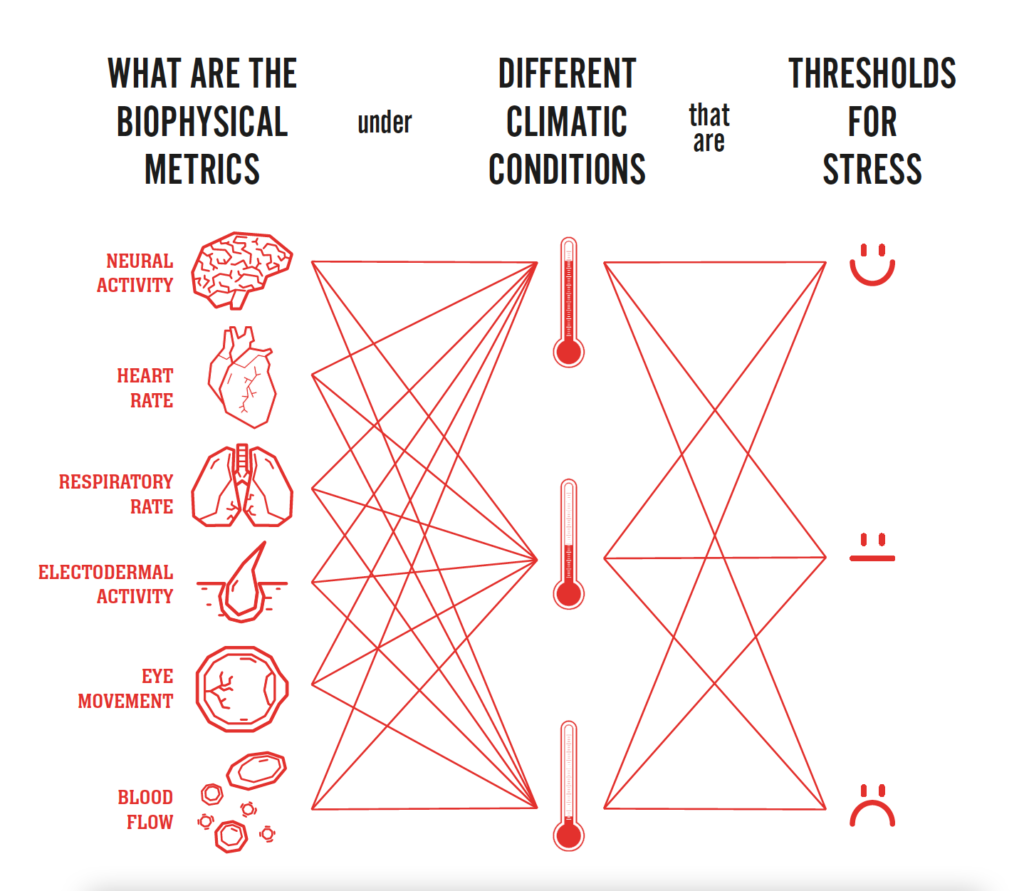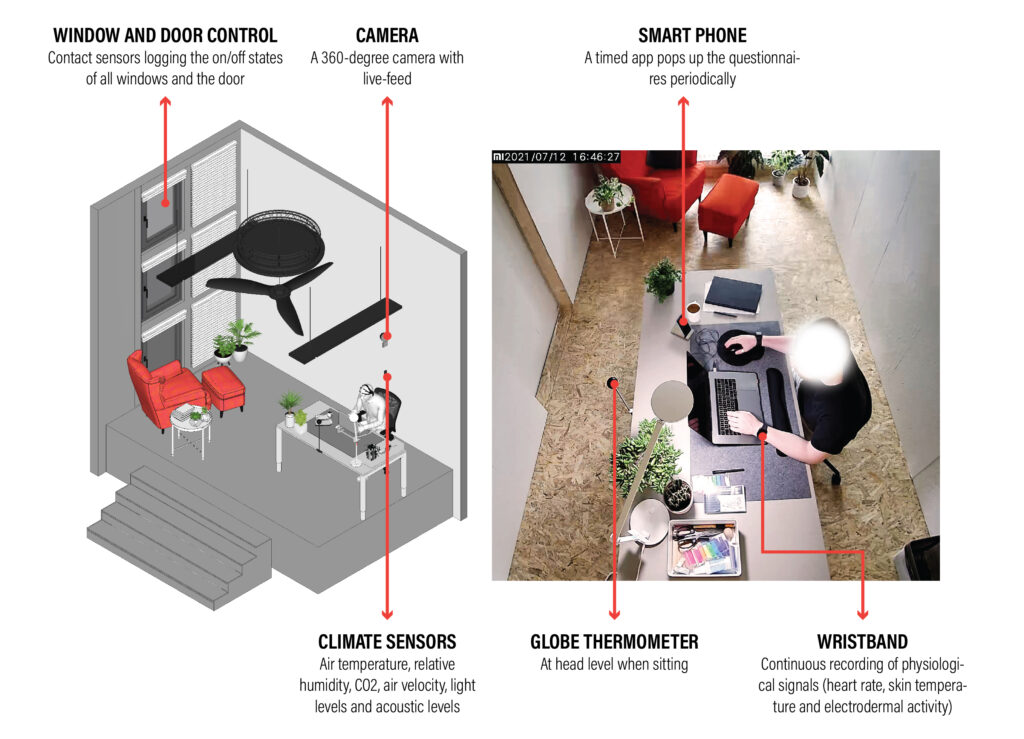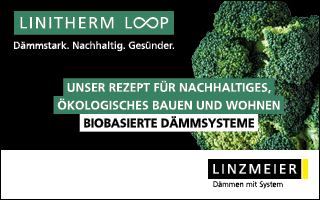Building standards on how to thermally regulate our indoor environments mostly target one thing: Minimising discomfort for the occupants. The goal is to make us as comfortable as possible [1], often at a great energy expense. An expense that will only keep growing as the climate extremes are getting more severe, and as much of our existing building stock is not prepared to handle the climate mitigation through passive building strategies alone. However, we seem to have overlooked one fundamental question: Why do we need this much comfort?
The pursuit of comfort and its long-term implications on human health have become dominant to our daily lives, when taking the elevator instead of stairs, the car instead of bike, and so on. As such we need to reflect those mismatches between resource consumption and health implications in the context of building conditioning as well. Does providing an optimal thermal environment lead to our body becoming lazy in thermal regulation? Or, on the contrary, could micro-dosing the body to mild discomfort be more effective to build up a healthy metabolic endurance? And if so, can more discomfort be a tool to, not only significantly reduce energy consumption, but also improve the occupants’ health and physical wellbeing [2]?
How the building operation culture affects our health is one of the main goals of the SenseLab, a research group at the Technical University of Munich. Lead by Prof. Thomas Auer, the team address health and physical well-being, rather than comfort, at the centre of their work, to create future guidelines on how to sufficiently condition indoor environments.
Methodology
Thermal comfort research dates to the first heat-balance models developed in the 1930s. While the studies were backed by data from lab experiments, the know-how did not reflect real life conditions which caused a performance gap between design assumptions of comfort conditions and real-world feedback. In the 1990s the research turned to the missing psychological aspect and introduced now-standardised thermal satisfaction, perception and preference surveys. The results of these surveys, collected in ASHRAE Global Thermal Comfort Database, laid the foundation for operational heating and cooling setpoint temperatures. However, the problem with performance gap persists and the mentioned health implications are not addressed. All the while, we still waste energy to achieve something, that we may not even need.
The last years of thermal comfort research have seen growing interest in combining this gap, by looking into psychophysiological data. Only possible due to recent advances in sensing technology in wearable biomedical data. SenseLab is one of such research groups that focuses on biomedical data collection. In the experiments, the SenseLab collects continuous
a. Environmental data: temperature, humidity, air velocity, CO2 and VOC levels, light levels etc.
b. Occupant behaviour data: clothing, activity, food/liquid intake, movement etc.
c. Physiological data: skin and core temperature, electrodermal activity, heart rate features, cognitive workload, hormonal panels etc.
d. Metadata: age, sex, weight, height, smoking/alcohol use, fitness level etc.
The data is collected over the course of the entire day – to capture the effects of the natural circadian variations in the human body.


Quelle: TUM Chair of Building Technology and Climate Responsive Design
Outlook
As the building sector lacks crucial data when it comes to how the indoor environment impacts the human body, the goal is to contribute to this research gap by developing standardised experimental protocols, data collection methods and bridging the know-how of various fields such as physiology, neuroscience, biomedical engineering, architecture and building physics. At the end, we hope to offer a more informed building design and operation approach that allows for a healthy amount of discomfort, while wasting less energy as we have in the last decades.
Bilge Kobas, Sebastian C. Koth, Prof. Thomas Auer
TUM Chair of Building Technology and Climate Responsive Design
Das multidisziplinäre Forschungsprojekt SenseLab war bei der DGNB Sustainability Challenge 2022 Finalist in der Kategorie Forschung.
References
[1] Stoops, J. L. (2004) A possible connection between thermal comfort and health. Lawrence Berkeley National Laboratory.
[2] van Marken Lichtenbelt, W.; Hanssen, M.; Pallubinsky, H.; Kingma, B.; Schellen, L. (2017) Healthy excursions outside the thermal comfort zone. Building Research and Information 45, No. 7, pp. 819–827. https://doi.org/10.1080/09613218.2017.1307647

